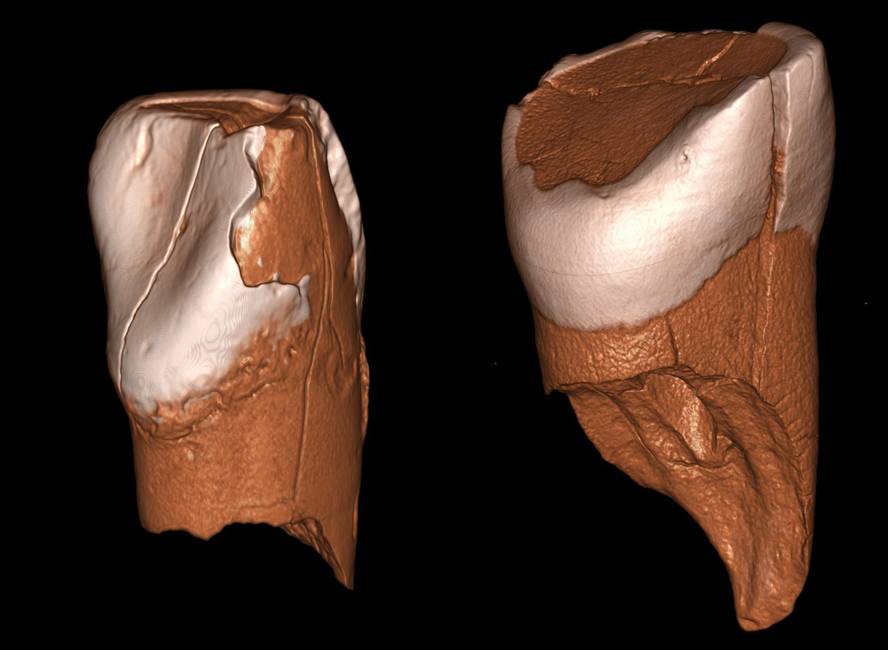Modern man arrives in Europe in two teeth

In the southwest and central Europe, about 42,000 years ago, the Protoaurignac culture appeared. The origin of this culture was not clear, since at that time more or less came modern man and the Neanderthals disappeared. Now, analyzing two milk teeth found in northern Italy, they have concluded that the culture of Protoaurignac corresponds to modern man. An international team of researchers has published research in Science.
Protoaurignac is a culture characterized by simple decorations and stone plates, but as for human fossils, only three are known related to this culture: Remains of a fetus of Le Piage (France) and two teeth of milk found in two places in northern Italy (Riparo Bombrini and Grotta di Fumane). And so far it was not clear which species these three fossils corresponded to.
Now these two teeth are analyzed. In the case of the bombrine incision, the thickness of the enamel has been studied using 3D techniques. In fact, it is shown that the Neanderthals had a finer enamel. And so they have been able to clarify that this tooth was of a modern man. In the case of Fumani incisivity, they have been able to extract mitochondrial DNA. And they have compared it to the present man, with the ancient modern man, with the Neanderthals, with the Denisoveses, with a hominine of the Osin of the Bones of Atapuerca and with a chimpanzee. They have come to the conclusion that this tooth was also a modern man or, according to the researchers, “had at least some modern ancestors.”
Thus, these two incisors of about 41,000 years, the oldest fossil associated with the Aurignac culture, show that at that time modern man was expanding in southern Europe. In addition, researchers have suggested that, as the Neanderthals disappeared in Western Europe some 39,000 years ago, it is possible that the disappearance of the Neanderthals is related to the spread of the Protoaurignac culture.




